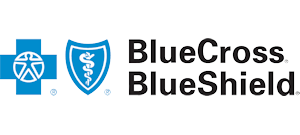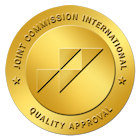In 2022, the CDC reported that over 30,000 people died from meth-related overdoses, a number that has been rising over the past decade, partly because meth is often mixed with fentanyl. In 2023, SAMHSA reported that about 25% of all treatment admissions for stimulant abuse were linked to meth use, emphasizing the increasing need for specialized meth addiction services.
Crestview Recovery provides medically supervised detox and round-the-clock support, ensuring each person safely manages withdrawal symptoms. With our team’s guidance, patients can transition from detox to lasting recovery, equipped with the tools and resources needed for long-term sobriety.
Healing Begins Here
How Meth Affects the Brain and Body?
Even after quitting meth, the mental health effects can linger. During withdrawal, people often experience deep depression and anxiety, which can make the process feel overwhelming. It’s common for people to struggle with mood swings, irritability, or trouble concentrating. Because meth affects the brain’s chemistry, the mental health symptoms can last for weeks or even months. That’s why treating mental health alongside addiction is so important. Therapy, counseling, and support groups can help people rebuild their emotional health as they recover from addiction.
Meth also causes physical damage to the body. It can increase heart rate, raise blood pressure, and put extra strain on the heart, leading to possible heart problems or even heart attacks. The drug can damage teeth (leading to “meth mouth”), cause significant weight loss, and harm the skin, leading to sores and infections. The longer someone uses meth, the more damage it can do to organs like the liver and kidneys, as well as the brain. While some of this damage can be repaired over time, quitting meth is the first step to giving the body a chance to heal.

What Happens When You Withdraw from Meth?
Meth Withdrawal Symptoms
- Fatigue: People often feel extremely tired and drained after stopping meth use.
- Depression: Intense feelings of sadness or hopelessness are common, with some even experiencing suicidal thoughts.
- Cravings: Strong urges to use meth again can make it hard to stay away from the drug.
- Increased Appetite: Many people feel hungrier than usual as their body adjusts to the absence of meth.
- Anxiety and Irritability: Feeling nervous, restless, or easily annoyed is typical during withdrawal.
- Sleep Problems: Insomnia or sleeping too much is common as the body tries to rebalance.
- Paranoia and Hallucinations: Some people may experience extreme paranoia or see and hear things that aren’t real, especially in the early stages of withdrawal.
- Mood Swings: Rapid changes in mood, from anger to sadness, can be common as the brain struggles to regain its balance.
- Aches and Pains: Physical discomfort, such as headaches, muscle pain, and body aches, is often reported during meth withdrawal.
- Cognitive Issues: Difficulty concentrating, memory problems, and slower thinking are frequent cognitive symptoms as the brain heals from meth use.
Meth Withdrawal Timeline
- First 24-48 Hours: People often experience intense cravings, extreme fatigue, and mood swings. Many may also feel anxious or depressed.
- Days 3-10: This is when withdrawal symptoms peak. During this time, people may face severe depression, trouble sleeping, irritability, and strong cravings.
- Weeks 2-3: Physical symptoms like fatigue start to ease, but emotional symptoms, such as anxiety and depression, may linger. Cravings can still be strong, but they gradually lessen.
- One Month and Beyond: Many people continue to feel emotional symptoms, like mood swings or depression, for several weeks. Post-acute withdrawal syndrome (PAWS) can occur, causing long-term mental health challenges, but these fade over time with the right support.
How Does Long Meth Stays in the System?
- Blood: Up to 1-3 days
- Urine: Around 3-7 days, though this can vary depending on the frequency of use
- Hair: Meth can be detected in hair follicles for up to 90 days after use
The effects of meth, such as the intense high, usually last 6-12 hours, but the drug itself can stay in the body for much longer, especially with repeated use. These detection windows can vary based on factors like how much meth was taken, how often, and a person’s metabolism.


The Dangers of Quitting Meth Cold Turkey
A big risk of quitting cold turkey is relapse. When the cravings and withdrawal symptoms become unbearable, people often turn back to meth just to relieve those feelings. Medical detox can help manage withdrawal symptoms safely and effectively, lowering the risk of relapse and setting up a person for long-term recovery.
Relapse Prevention After Meth Withdrawal
To prevent relapse, it’s important to develop coping strategies that help people handle cravings. These might include practicing mindfulness, taking up new hobbies, or having a healthy routine in place. Support groups like Narcotics Anonymous (NA) can also help people stay accountable and build connections with others who understand their struggles. People who have a plan for dealing with triggers and cravings are less likely to relapse, and this plan often includes having a strong support system and staying connected to their treatment.

The Role of Family and Social Support in Meth Recovery
One of the most important things family members can do is offer consistent, unconditional support. Recovery can be a tough journey, and knowing that loved ones are there with encouragement can make a huge difference. Regularly check in to see how your family member is doing, and be a source of positivity during tough moments. A simple “I’m proud of you” can go a long way in helping someone stay focused on their recovery.
Understanding that meth addiction is a disease, not a moral failing, is crucial. Families often feel frustrated or helpless when they see a loved one struggling, but learning about the science of addiction can help put things in perspective. Addiction affects the brain, and recovery is about healing, not just willpower. This understanding will help family members offer the right kind of support without blaming or shaming their loved one.
A supportive home environment is essential for someone in recovery. It’s important to create a space that is free from drugs, alcohol, and other triggers that could lead to relapse. This might involve removing any items related to past drug use, like paraphernalia or places where the person used to use meth. Offering a drug-free environment will help the person feel safe and focused on healing.
Encouraging your loved one to attend therapy and support groups, like Narcotics Anonymous (NA) or Smart Recovery, can be incredibly beneficial. These groups provide a sense of community with others who understand the struggle. They also give people a space to share their experiences and learn new coping strategies. Family members can help by supporting their loved one in finding and attending meetings, or even participating in family therapy sessions if needed.
Setting healthy boundaries is essential for both the family and the person in recovery. Boundaries help maintain a balance between offering support and protecting yourself emotionally. For example, it’s important to make it clear that you’re there for them but won’t tolerate any harmful or destructive behaviors. Boundaries ensure that the relationship stays supportive without enabling bad habits or behaviors.
Recovery is a journey, and it’s important to celebrate each step, no matter how small. Whether it’s a week of sobriety, making it through a difficult day without using meth, or simply sticking to a treatment plan—celebrating those wins can help build confidence and motivation. Family members can take part in these celebrations, showing their loved one that their progress matters and is appreciated.
Recovery takes time, and setbacks may happen. It’s important for family members to be patient and compassionate as their loved one works through the challenges of withdrawal and recovery. Even though progress might be slow, showing that you’re committed to their well-being can make a significant difference. It’s easy to get frustrated, but understanding that recovery is a long-term process helps keep the family bond strong.
Supporting a loved one through meth withdrawal and recovery can be emotionally exhausting. It’s important for family members to take care of themselves, too. This means seeking support for themselves, whether through counseling, support groups, or talking to friends. When family members take care of their own well-being, they’re better equipped to help their loved one in a healthy, sustainable way.
It’s also important for families to understand that addiction is a disease, not a moral failure. Educating loved ones about addiction can help them provide the right kind of support. By playing an active role in their loved one’s recovery, family members can be an essential part of the healing process. Through understanding, patience, and encouragement, they can help their loved one navigate the challenges of meth withdrawal and build a healthier, more stable future.
The Meth Detox Process
The detox process usually begins with medical monitoring, where healthcare professionals track vital signs like heart rate and blood pressure, as meth can cause dangerous spikes in these areas. The goal of detox is to help the body rid itself of meth safely while minimizing the withdrawal symptoms, which can include fatigue, depression, intense cravings, and irritability.
In many cases, detox is followed by additional care, such as counseling and therapy, to address the psychological aspects of addiction. This is important because, while detox helps people physically, it does not address the underlying causes of addiction. Medical detox often takes a few days to a week, depending on how long a person has been using meth and how severe their addiction is.
People undergoing detox may receive medications to help manage withdrawal symptoms, making the process less uncomfortable. After detox, ongoing treatment, including therapy and support groups, is necessary to prevent relapse and help people build healthy coping mechanisms for life without meth.
Getting through the detox phase is a significant milestone in recovery, but it’s only the beginning of the journey. With the right support, people can transition into long-term treatment and begin rebuilding their lives free from meth.
Meth Addiction Treatment in Portland at Crestview Recovery
We offer a range of treatment options that address both the physical and emotional aspects of meth addiction. From medically supervised detox to counseling, therapy, residential treatment, sober living, intensive outpatient, aftercare and support groups, our programs are designed to meet each person’s unique needs. We focus on creating a safe, supportive environment where people can explore the root causes of their addiction and learn healthy coping strategies.
Our experienced team of professionals works closely with each person to ensure they receive the care and attention needed to move forward. We also offer aftercare and relapse prevention plans to support sustained recovery once treatment is complete. With a community of compassionate staff and fellow clients, Crestview Recovery provides a powerful network of support to help people every step of the way.
If you or a loved one is struggling with meth addiction, Crestview Recovery is here to help. Reach out today to start your journey to recovery in Portland with a team that truly cares.





















